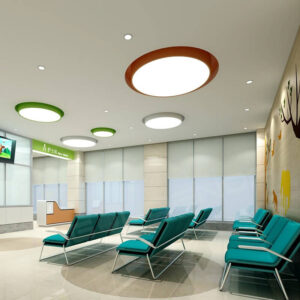Healthcare experiences are made up of more than moments of care—they also include the time spent in transition between those moments. And these transitional spaces where patients and their families wait are often uncomfortable and unappealing, increasing feelings of stress and negative mindsets.1
Transition spaces offer a significant opportunity for improving the healthcare experience. By providing more choices and supporting a range of postures and activities—conversations, information sharing, getting work done, resting and relaxing, or using personal devices to stay connected with the outside world—waiting spaces should be adaptable and productive environments that provide better healthcare experiences.

CREATE INVITING SPACES THAT REDUCE STRESS11
Provide comfortable settings and hosting amenities, including a space for items such as bags, personal devices or beverages.
Accommodate people’s preferences for varying levels of noise and other stimuli, creating quiet zones where people can retreat from sources of noise.
Create conversation areas where families can be together without the distraction of strangers.
Incorporate soothing materials, textures, colors, lighting and views.
LEVERAGE TECHNOLOGY
Include well-placed wall monitors to display information about the organization, health-related information and/or waiting updates.
Provide media settings for self-directed or group learning.
Support use of personal devices with easy access to power throughout the space.
Anticipate new and emerging technologies with an adaptive infrastructure.
